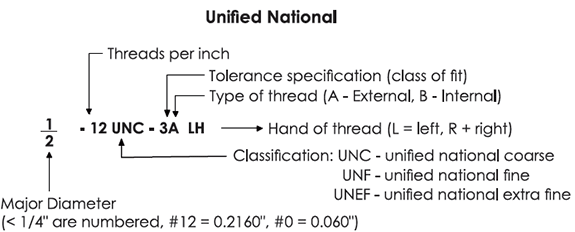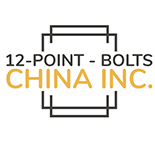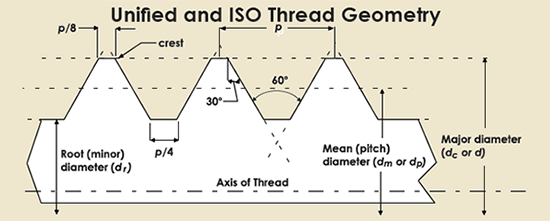
UNC – Unified National Coarse
UNF – Unified National Fine
UNEF – Unified National Extra Fine
UNS – Unified National Special
UNR – Unified National Round (round root)
ISO – International Standards Organization (metric)
Two major Unified thread series are in use: UN and UNR. For the UN series, you specify C
(coarse), F (fine), or EF (extra fine), as required. For the UNR series, the root radius must also be specified.
The UNR series screws are better for fatigue because the root radius reduces stress concentrations. The
basic thread geometry for ISO and Unified threads is shown below.
Thread Standards and Definitions
Pitch (p) – The distance between adjacent thread forms measured parallel to the thread axis.
Lead (L) – The distance the nut moves parallel to the screw axis when the nut is given one turn.
TPI (n) – The number of Threads Per Inch, related to the pitch by p = 1/n.
Root (minor) Diameter – Smallest diameter of screw - dr.
Major Diameter – Largest diameter of screw - dc (sometimes designated as d).
Mean (pitch) Diameter – Average diameter of screw - dm (sometimes designated as dp).
Lead Angle (λ) – The angle defining the inclination of the thread (see figure below).
Helix Angle (ψ) – The angle between the thread axis and the lead angle (ψ + λ = 90o).
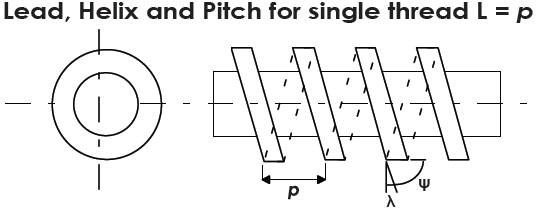
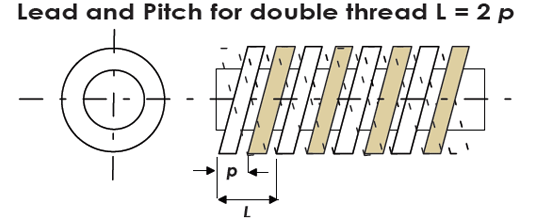

Loose (where the joint is frequently disassembled) – Class 1
Standard (general assembly) – Class 2
Close (high accuracy, fine fits) – Class 3
Designations for each class and the type of thread (inside or outside) for Unified and Metric are given above.
Nomenclature: Examples of the nomenclature for specifying a threaded fastener are given below for Unified National and Metric specifications.
